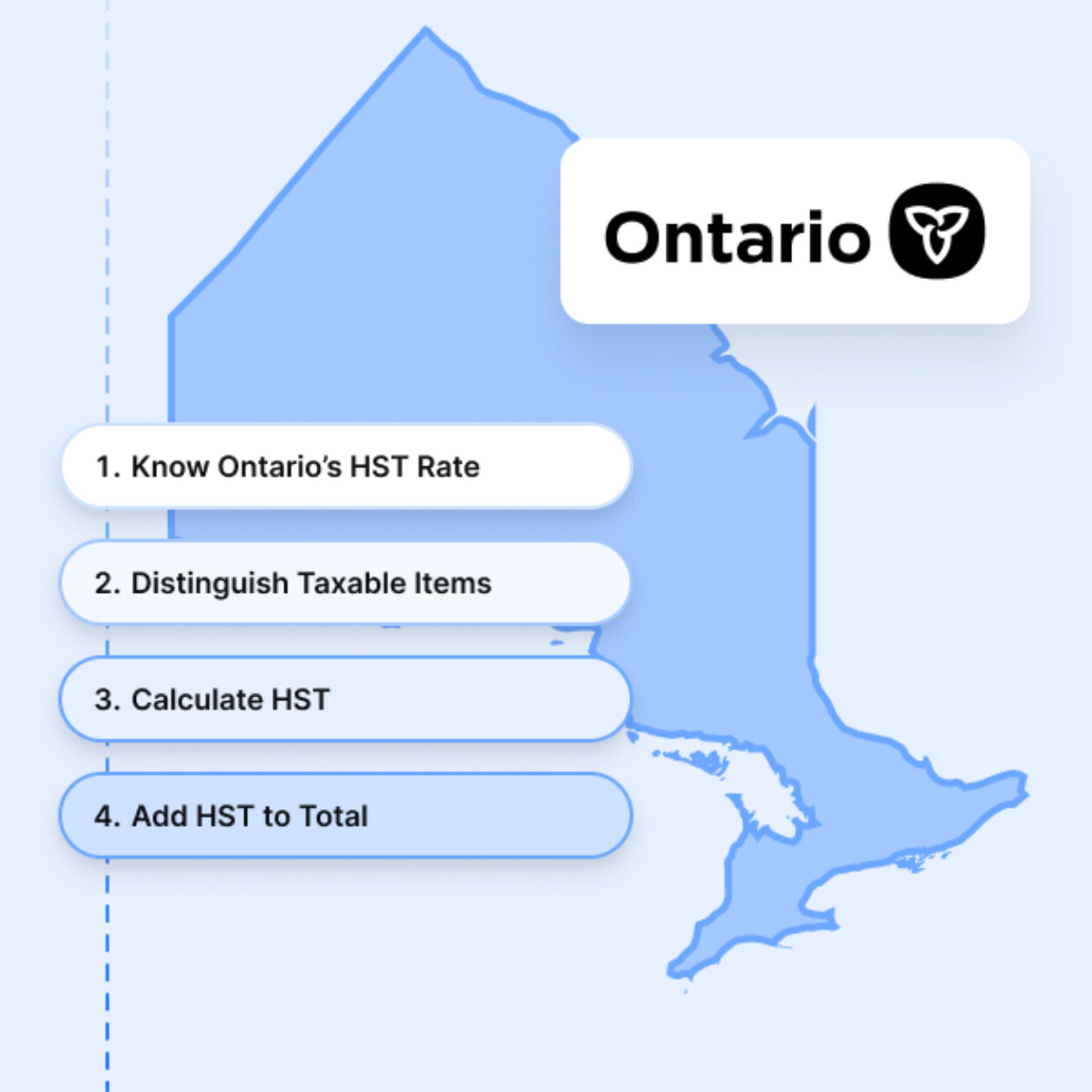
4 Steps to Stay Sales Tax Compliant in Ontario, Canada
Accurate sales tax calculation is important for large and small businesses that are based in Ontario province in Canada. Sales tax compliance ensures companies operate according to the regulatory framework. Ontario has a distinctive sales tax structure that is headlined by a Harmonized Sales Tax (HST). This means that the Goods and Services Tax (GST) and Provincial Sales Tax (PST) come together to facilitate business operations.
This guide will help you understand how to calculate sales tax in Ontario, Canada and avoid any issues that may arise due to complications.
How to Calculate Sales Tax in Ontario
Step 1: Understand Ontario’s Harmonized Sales Tax (HST) Rate
Harmonized Sales Tax: The Harmonized Sales Tax Rate in Ontario is 13%, with federal GST and provincial portions making up 5% and 8% of the rate, respectively. This information is important, especially when it comes to having a better understanding of the process of calculating sales tax in Ontario.
What HST Applies To: HST is applicable to many goods and services, such as digital products and the majority of professional services. It is levied upon purchase, and businesses are bound to remit it to the government regularly. Calculating the Ontario HST is a simple process. You just have to multiply the product’s sale amount by 0.13 (13%). Knowing this Ontario HST rate formula will help businesses in Ontario operate according to the regulatory guidelines.
Step 2: Identify Taxable and Non-Taxable Goods and Services
Most items and services are subjected to HST, but some of them are exempted. It’s important for businesses to determine which goods fall tax-free to ensure accurate Ontario tax compliance.
These items are exempt from HST in Ontario:
| Basic groceries | Food items such as fresh fruits, vegetables, and meat are exempt from HST. The sales tax is usually levied on prepared foods, snacks, and beverages. |
| Medical supplies | Prescription drugs, medical devices, and some health services are HST-free. |
| Residential rents | Rent on residential accommodation is HST-free. However, you will be charged on commercial leases. |
It is important for business owners to understand the difference between taxable goods and HST exemptions and rebates. This will help them run their businesses within the regulatory framework.
What Non-Compliance Means: You may be found guilty of non-compliance and penalized if you don’t charge HST to your customers or apply it to an item by mistake. Business owners can consult with the Canada Revenue Agency or use an automated tax management solution such as TaxCloud to determine which items are subjected to HST or are exempted. They will help you differentiate between taxable and non-taxable items in real-time.
Step 3: Calculate the HST Amount
We have understood the Ontario HST rate and which items are taxable. Now, we will get to the process of calculating the HST amount on a transaction. The process of calculating HST in Ontario is as follows:
Formula for HST calculation:
Example: The HST calculation formula for a $200 product will be: HST = $200 × 0.13 = $26
You will charge customers $26 as HST for a $200 product.
It is pertinent to mention that HST is calculated based on the sale price before other taxes are calculated. This means that the HST is added to the sales price and you will be paying a total amount of $226 for the item.
Step 4: Calculate the Total Sales Amount with HST
The next step is to calculate the total sales amount after determining the HST amount. This is the price the customers will actually pay. You can calculate the total sales amount by simply adding the HST to the original sales price.
The formula of Total Sales Amount with HST is:
Example: Let’s say that you purchase an item costing $500. It will be subjected to $65 HST. The amount will be added to the original sale price. So, the customer will be paying an inclusive price of $565 ($500+$65).
The above mentioned formula can be applied to determine HST on any product that is subjected to the regional sales tax. Businesses are advised to always check with the CRA guideline for potential exemptions or zero-rated items that may affect the calculation.
It is important that businesses apply the right HST rate to ensure compliance. They can be held accountable for non-compliance if they charge more or less than the designated amount. Companies should always keep their bookkeeping platforms updated regarding any developments in this regard.
Final Thoughts
Understanding the process of how to calculate sales tax in Ontario is important for every regional business. With an HST rate of 13%, most sales will require companies to collect taxes from their customers but it’s equally important that businesses are aware of the tax exemption on certain goods and services. Failure in applying the right HST rate may be troubling.
Businesses that handle numerous transactions, can use automated solutions to ensure Ontario HST compliance and reduce the risk of errors. It is packed with features that provide real-time tax calculations and automatic updates.
Join 15,000+ eCommerce owners
Stay informed on sales tax news — sign up for our free newsletter.
